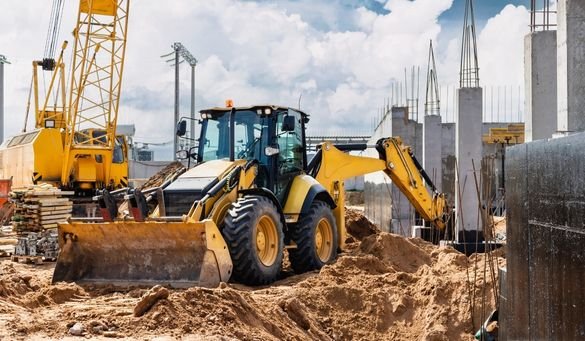Heavy Equipment Rental: Large Machinery for Any Kind Of Construction Task
Heavy Equipment Rental: Large Machinery for Any Kind Of Construction Task
Blog Article
Optimize Your Budget by Understanding the Prices Connected With Construction Tools Leasings
Recognizing the complete scope of expenses connected with building and construction equipment leasings is critical for maximizing your budget plan. What methods can be used to effectively manage these expenses and make sure an extra reliable rental experience?
Summary of Rental Prices
When thinking about construction devices rentals, comprehending the linked expenses is extremely important for effective budgeting and task planning. Rental expenses can differ substantially based upon a number of variables, including devices kind, duration of leasing, and area. The initial rental charge often shows the devices's market need and its associated operational capacities, affecting the overall cost.
Along with the base rental rate, supplementary expenses might arise, such as transportation charges, gas surcharges, and upkeep costs. It is vital to make up these additional costs to precisely examine the overall expense of renting out equipment. Additionally, the rental duration can impact prices; longer leasings might certify for affordable rates, while short-term rentals might incur higher everyday fees.

Breakdown of Rental Prices
A thorough understanding of rental prices is necessary for specialists and job managers intending to maximize their budget plans. Rental rates for construction equipment commonly contain numerous elements, including base prices, time-based costs, and usage fees.
Base prices are the core fees connected with the rental of the tools, commonly figured out by the type and dimension of the machinery. These prices can differ substantially, affected by factors such as devices need, schedule, and regional market trends. Time-based fees, which may be daily, weekly, or monthly, offer to accommodate various job timelines and rental durations.
Furthermore, rental rates might include use fees, which are applicable when devices is utilized past a specified limit, ensuring that the rental firm can represent wear and tear. Seasonal need fluctuations can additionally affect rental prices, with peak construction periods usually regulating higher rates.
Furthermore, recognizing the rental business's plans regarding maintenance and insurance can supply more insight right into the overall expense framework. By evaluating these parts, contractors can make educated choices, ensuring the choice of rental devices straightens with both project demands and spending plan constraints.
Added Costs to Consider
Understanding the complexities of extra charges is important for service providers to handle their total service expenditures properly. Past the standard rental rates, various additional charges can considerably affect the total cost of equipment service. These costs usually consist of distribution and Check This Out pick-up fees, which can vary based on range and logistics associated with delivering the devices to and from the task site.
Furthermore, some rental companies might enforce gas surcharges if the equipment is returned with much less fuel than when leased. It is likewise important to be mindful of prospective cleaning costs, particularly for specialized devices that requires comprehensive maintenance after usage.

Extensively examining the rental arrangement and making clear these extra costs upfront can assist contractors prevent unanticipated prices and guarantee that spending plans continue to be intact throughout the task lifecycle.
Repair And Maintenance Costs
Normal maintenance and repair work costs are usually ignored elements that can considerably affect the total price of building equipment rentals. When renting devices, it is crucial to consider not only the rental costs yet additionally the possible expenses related to keeping the equipment in optimum operating problem.
Numerous rental business consist of basic maintenance as part of the rental contract; nevertheless, extra extensive fixings or unforeseen malfunctions can result in added expenditures. It's vital to review the rental contract very carefully to recognize what upkeep solutions are covered and what responsibilities fall on the renter.
Furthermore, equipment that is not properly maintained can cause inadequacies at work site, potentially increasing and causing delays task prices. To minimize these threats, it is suggested to perform normal examinations and keep open interaction with the rental copyright pertaining to any kind of problems that develop during use.
Insurance Policy and Responsibility Expenses
Insurance coverage and liability costs are essential parts that can dramatically influence the total cost of construction tools rentals (equipment rental company). These costs make certain that both the rental firm and the customer are secured from potential economic losses developing from accidents, damages, or theft throughout the rental period

Additionally, clients need to know any type of deductibles or exemptions in the insurance coverage, as these can affect prospective out-of-pocket expenditures. Understanding the conditions of any insurance policy coverage is crucial to avoid unforeseen expenses. Inevitably, budgeting for insurance and obligation expenditures can help make sure a smoother rental experience and shield against financial dangers linked with construction projects.
Final Thought
In verdict, a detailed understanding of the expenses linked with building and construction devices rentals is important for effective spending plan monitoring. Eventually, informed decision-making relating to devices rentals adds to the general success of construction ventures.
Rental costs can differ dramatically based on a number of factors, including tools type, duration of leasing, and place (aerial lift rental). The rental duration can influence rates; longer leasings might qualify for affordable rates, while temporary leasings could incur greater daily costs
By conducting detailed research study and involving with credible rental companies, service providers can efficiently browse the complexities of rental rates, ultimately optimizing their financial resources.
Beyond the standard rental rates, numerous additional costs can significantly impact the total expense of tools rental. Rental business usually provide liability insurance coverage that covers injuries to third events or damages to residential property, while equipment damage insurance coverage can cover the expense of fixings or replacement if the rented devices is harmed.
Report this page